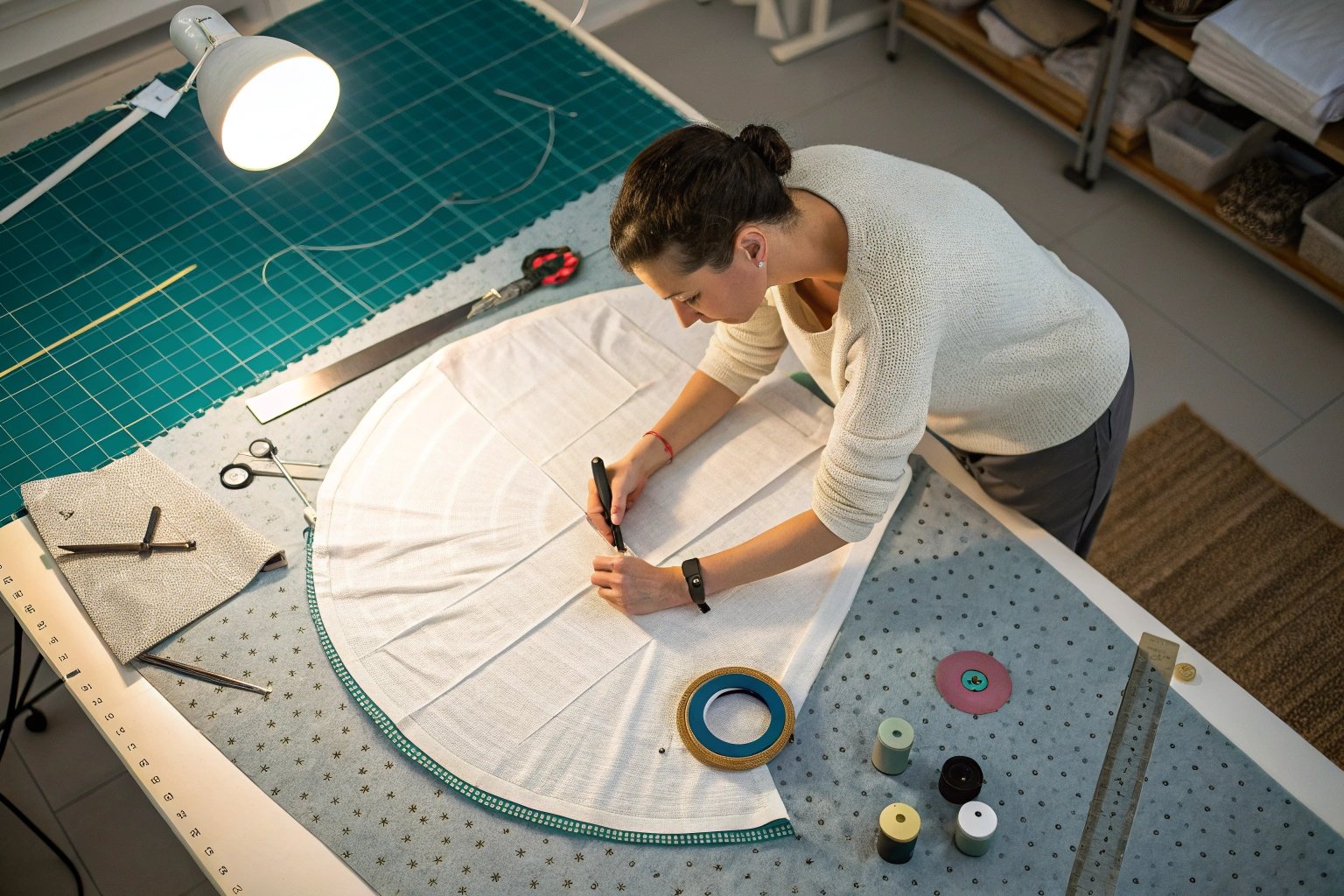In the quest for sustainable fashion, minimizing waste is more than a trend—it’s a mandate. Traditional fabric cutting can waste up to 30% of material. For designers and sourcing teams aiming for efficiency and environmental impact, the solution may lie in both the material and the method: enter circular knit fabrics and zero-waste pattern cutting.
Circular knit fabrics offer natural elasticity, seamless construction possibilities, and width efficiency, making them ideal for zero-waste pattern cutting in sustainable garment production.
In this article, we’ll break down how circular knits outperform conventional textiles in reducing waste, why they’re a top choice for functional and fashion brands, and how buyers like Ron can confidently source them from reliable suppliers like Fumao Fabric.
What Makes Circular Knit Fabrics Ideal for Zero-Waste Cutting?
The structure of circular knit fabrics—created through interlooped yarns—makes them exceptionally versatile in both design and layout. They can be engineered to form tubular shapes or wide continuous panels with natural edge stability.
This construction reduces fabric waste by enabling flexible pattern alignment, eliminating seam allowances, and maximizing usable surface area.
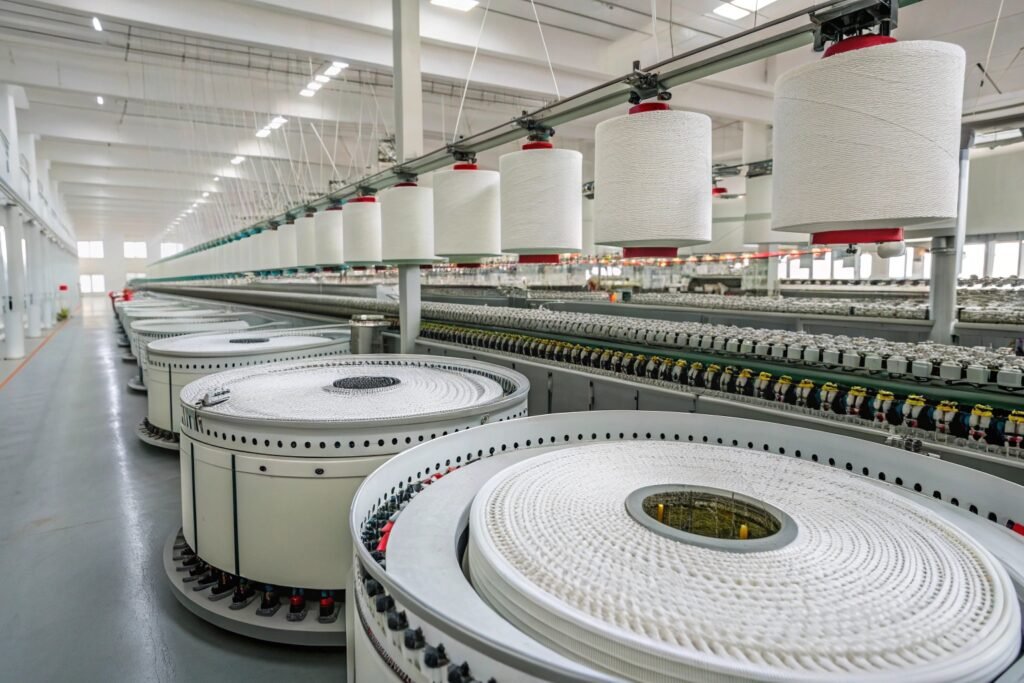
How Do Circular Knits Reduce Waste During Pattern Cutting?
Unlike woven fabrics that fray and require margin padding, circular knits allow designers to minimize excess edges. This is especially valuable for seamless designs. Tubular formats can eliminate side seams altogether. Learn more from Zero Waste Design Collective about garment planning with circular formats.
When paired with automated pattern planning software like CLO 3D, fabric usage is optimized digitally before any cutting begins—saving time, money, and materials.
What Kind of Garments Work Best with Circular Knits?
Circular knits are especially suitable for bodywear, leggings, t-shirts, and base layers. Brands like Wolven and Organic Basics have used them for seamless sustainable garments. Their stretch and drape allow creative zero-waste silhouettes without sacrificing comfort or mobility.
Are Circular Knits Compatible with Automated Cutting Systems?
Yes—and they’re more compatible than you might think. The flexibility of circular knits, when stabilized properly, allows for clean, precision cutting using digital flatbed systems.
Modern automated cutting systems like Gerber, Lectra, and Tukatech can process circular knit fabric rolls and optimize material layout through AI-driven nesting algorithms.
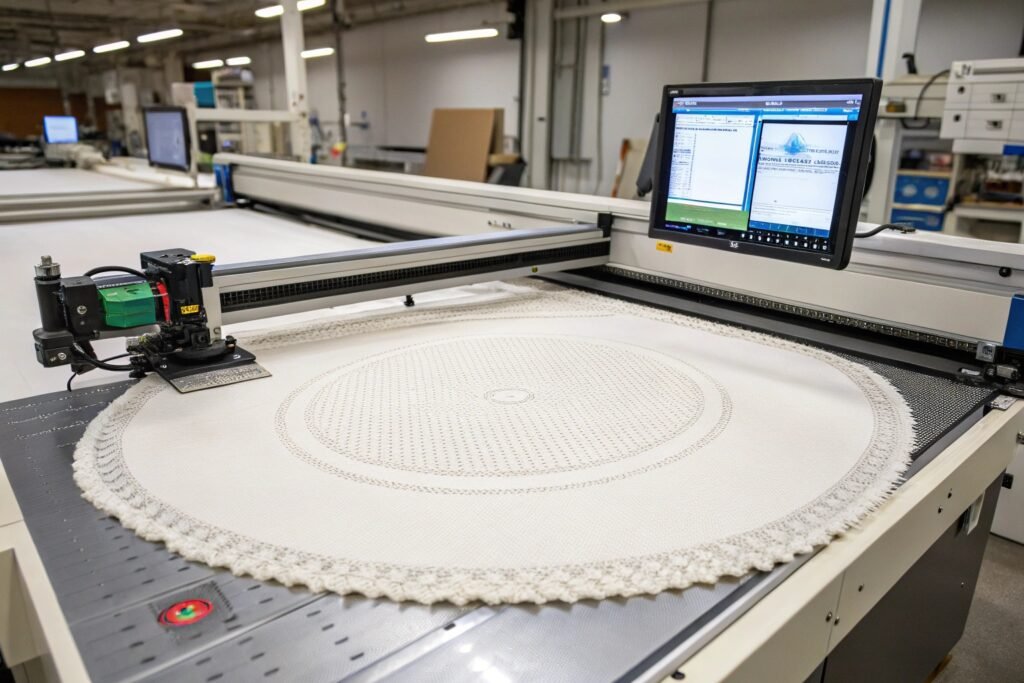
What Adjustments Are Needed for Knit Fabric in Auto Cutting?
Circular knits can be slippery, but this is addressed by applying slight tension and using vacuum suction tables. Pre-treatment like starching or fusing is sometimes used to prevent curl during cutting.
According to Lectra’s textile cutting guide, zero-waste planning is enhanced with digital templates, especially when paired with 3D visualization tools. Our Fumao QC team ensures knit rolls are tension-calibrated before shipment to help automate-ready buyers.
Can Circular Knit Tubular Fabric Be Cut Without Layout Loss?
Absolutely. Tubular formats can yield near-zero waste for cylindrical garment types—arm sleeves, socks, even underwear. Check out Santoni’s seamless technology to explore how circular weft knitting revolutionizes whole-garment design without panel cutting.
Which Sustainable Fibers Work Best with Circular Knits?
Circular knits are compatible with a wide range of sustainable fibers—some of which are even enhanced by the knitting process. These include:
Organic cotton, TENCEL™ Modal, bamboo viscose, and recycled polyester (rPET), all of which are commonly knit into soft, stretchable fabrics ideal for zero-waste cutting.
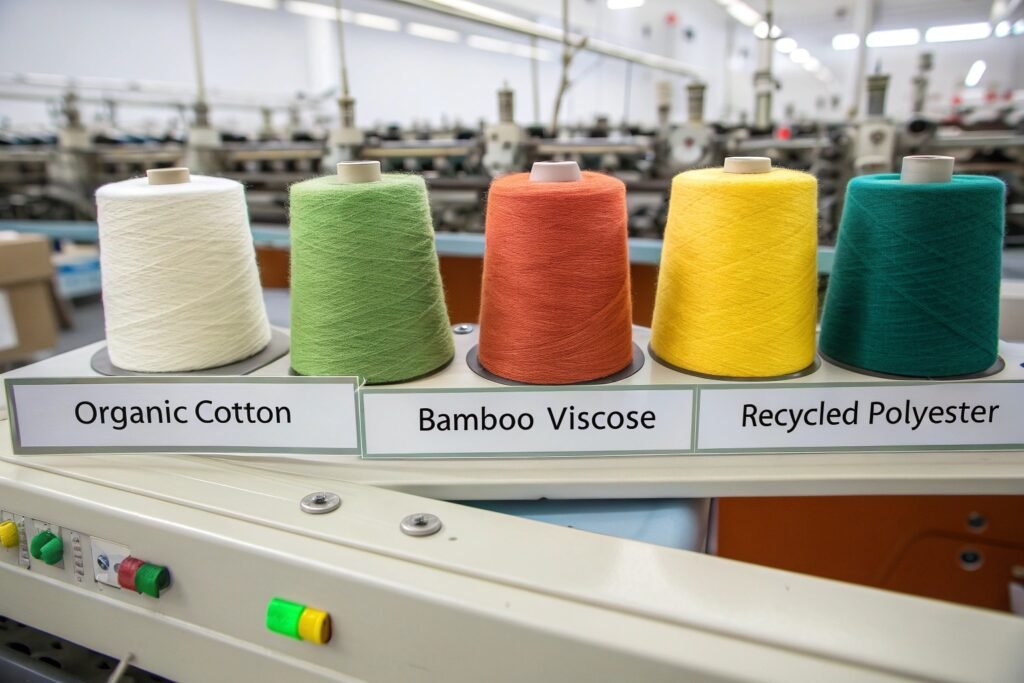
Why Are These Fibers Ideal for Circular Construction?
They provide softness, elasticity, and eco-certifiability—key for consumer trust. At Fumao, we offer GOTS-certified organic cotton knits and GRS-certified rPET blends. Buyers can verify our compliance on Textile Exchange’s database.
Additionally, yarns like TENCEL™ bring moisture-wicking and antibacterial properties while reducing environmental impact, as explained by Lenzing.
How Do Fabric Certifications Impact Zero-Waste Strategies?
Certified fabrics ensure that both the fiber source and processing method support sustainability goals. For example, our bamboo-modal blend circular knits carry OEKO-TEX Standard 100 and pass EN ISO wash tests. This gives buyers like Ron traceable, compliant material for brands targeting eco-conscious customers.
How Can Small Brands Leverage Circular Knits for Sustainability?
Small and medium-sized brands don’t need large budgets to start integrating circular knits. In fact, the material flexibility and low-waste yield make them more cost-efficient in small runs.
Circular knit fabrics allow even low-MOQ buyers to access sustainable production with minimal cutting waste and reduced sampling overhead.
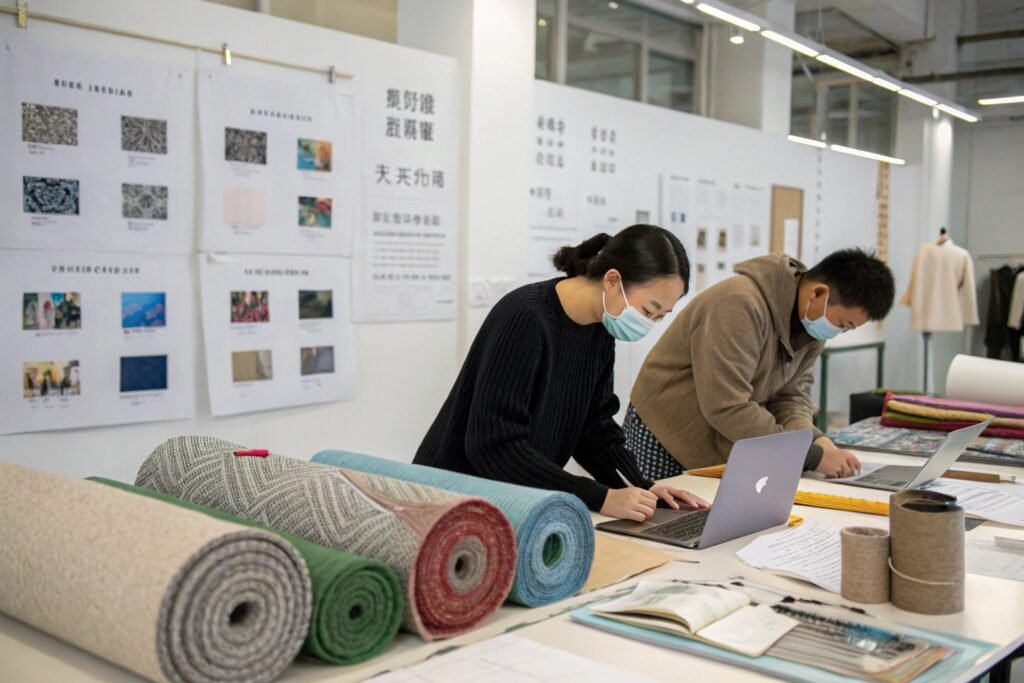
What Is the Minimum Order Quantity for Circular Knit Zero-Waste Fabric?
At Fumao, we offer as low as 200 meters per color for certified circular knit fabrics, with 48-hour strike-off sampling. This supports agile testing and design revisions.
Startups can use platforms like SwatchOn or Common Objective to locate ethical fabric sources. We collaborate with both for cross-border sampling support.
Can Startups Access Design Support for Seamless Patterns?
Definitely. We provide downloadable CAD templates and access to partners who offer 3D prototyping for zero-waste layouts. Tools like Browzwear help simulate cut-free silhouettes with fabric-specific behavior inputs.
Our team also hosts webinars on zero-waste fashion for small batch clients—bridging the knowledge gap with hands-on technical support.
Conclusion
Circular knit fabrics are more than just soft and stretchy—they’re a smart solution for forward-thinking fashion brands committed to sustainability and efficiency. Whether you're targeting zero-waste cutting, seamless garment construction, or eco-fiber integration, circular knits empower you to do more with less. At Fumao Fabric, we specialize in helping brands translate vision into production—combining certified materials, flexible MOQs, and full design support. Sustainability isn’t just about what fabric you choose—it’s about how you use it. And with circular knits, the possibilities stretch far beyond the pattern.

